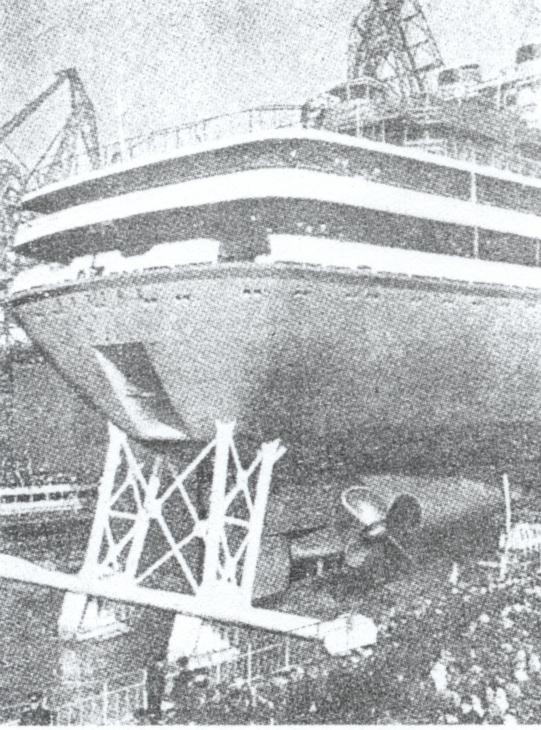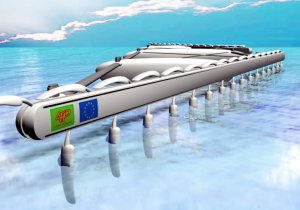Hydrofoils: Pleasure Top
Archived Messages, 2005
Count,MessageID,category,ShortTitle,Message,Date,UserName,MsgPswd,Phone,Email,ParentMsgId
“1”,”953728″,”8″,”need volga 70 engine cover||953728″,”
im looking for a volga70 engian cover the baot had a volvo engine set up ..higher in the frount with luvers tapering doun to about 2 in. in the back …thanks for any help locating one ….i put in a 330 hp. v8 and a mercery brovo 1 out drive and roled the boat over at 112mph. owwh …before that i had a madsa merain engine and got a good 70mph. ….i think ill settle for an 70 top speed….. doug harris …. dougieloo@aol.com
“,”2005-12-29″,”Doug Harris”,”nopswd”,” “,”dougieloo@aol.com”,”8″
“2”,”939930″,”8″,”Re; Re; volga 70 ||939930″,”Hi Scott, it was good to see your posting, and I am delighted to hear that Myrel was finally able to sell his boat based on the IHS listing. The Announcements page, of course, has been discontinued with the advent of this BBS.”,”2005-11-29″,”Barney C Black”,”nopswd”,” “,” “,”939642”
“3”,”939720″,”8″,”Re; Re; Re; volga 70 ||939720″,”Sorry again, brain slipping today, you can e-mail me at tothebin@adelphia.net”,”2005-11-29″,”Scott Smith”,”nopswd”,” “,”boatswithwings@adelphia.net”,”939646″
“4”,”939646″,”8″,”Re; Re; volga 70 ||939646″,”Sorry, videos slightly too large to fit on here (around 3.5 meg). But I have stills and a couple of videos for anyone who would like to see. Drop me an e-mail and I’ll send them. I have a couple of friends who want to post them, I’ll let you know when that happens.”,”2005-11-29″,”Scott Smith”,”nopswd”,” “,”boatswithwings@adelphia.net”,”939642″
“5”,”939642″,”8″,”Re; volga 70 ||939642″,”Good to hear from you Jim! I worked with Charlie Slater, and met you a number of years ago at your house in Fort Lauderdale. You took me and my ex-girlfriend for a ride in the Volga. How did the re-riveted hatch and windshield brace work out for you? I’ve told others about your boat, and sent them the few low-res pics that I had. I’ve moved up to Stuart and built a full machine shop in my garage, if you need anything I’d be glad to help. I picked up the 1968 Grumman hydrofoil listed in the announcements page, previously owned by Myrel Harner. Finally ran it, took some pictures and a few videos. I’ll attach one below, if it isn’t too big. I also have a couple of Dynafoils, if you’d like to take a ride. Please drop me a line, I’d love to talk to you again.”,”2005-11-29″,”Scott Smith”,”nopswd”,” “,”boatswithwings@adelphia.net”,”939361″
“6”,”939589″,”8″,”Re; volga 70 ||939589″,”Do you have pictures of the Volga you could email to me? Always interested in where these bpats are. When and how did you find yours?
I own a converted Volga with 454 cu ” V8 inboard V-drive. It’s for sale if you know anyone interested. Open to offers above 25K . See it at www.turnermarinegroup.com on brokerage page.
Mike Turner”,”2005-11-29″,”Mike Turner”,”nopswd”,” “,”mc27@adelphia.net”,”939361″
“7”,”939432″,”8″,”Dynafoil and Wetbike Movie online!||939432″,”Hi Dynafoil fans,
We were out last Saturday with some vintage watercraft and thought you’d enjoy the video and still photos.
http://s8.yousendit.com/d.aspx?id=0A86W64G6PQBY086TCTGJ06IY5
You’ll want to save this to your harddrive and then play it from there. It’s 55mb, so well worth watching!
Todd”,”2005-11-28″,”Todd Miller”,”nopswd”,” “,”austinado16@cs.com”,”8″
“8”,”939361″,”8″,”volga 70 ||939361″,”I own and restored a volga 70 in fort pierce Florida. it has the volvo diesel.”,”2005-11-28″,”Jim Pedra”,”nopswd”,” “,”skyboss1@comcast.net”,”8″
“9”,”920868″,”8″,”Re; Re; Re; Volga with tailfins?||920868″,”Volga with tailfins “Yellow Danger” in Stockholm”,”2005-10-26″,”Jan Wennerstrom”,”nopswd”,” “,”jan.wennerstrom@bredband.net”,”912432″
“10”,”920858″,”8″,”Re; Volga with tailfins?||920858″,”The tailfins on early Volgas are original. (See also “Molnia”
in Jane´s Surface Skimmers)
My friend in Stockhom has a Volga 1968 with fins.
The ID plate on my VolgaVingen from 1984 is placed
on starboard side at the rim inside engine hatch.
Enclosed is a nice Volga just clear of restoration.
Best regards Jan Wennerstrom, Club Volga Stockholm
“,”2005-10-26″,”Jan Wennerstrom”,”nopswd”,” “,”jan.wennerstrom@bredband.net”,”910610″
“11”,”916787″,”8″,”Stevenson SportFoiler Published||916787″,”Stevenson Projects produced a set of plans for the SportFoiler, a single person surface-piercing hydrofoil. Unfortunately, several years ago they abruptly discontinued the plans, although many of us have asked for them.
To my delight, Stevenson Products has published the plans (for free!!) online. The address is: http://www.stevproj.com/TheSportfoilPlans.pdf
I want to thank the people at Stevenson, as this project shows just how easy hydrofoils are to build. Don’t dismiss these plans. “,”2005-10-19″,”Barry Steele”,”nopswd”,” “,” “,”8”
“12”,”912432″,”8″,”Re; Re; Volga with tailfins?||912432″,”Thank you for your help, Eje! I should have found those pictures myself of course…”,”2005-10-12″,”Maurits”,”nopswd”,” “,” “,”911712”
“13”,”911712″,”8″,”Re; Volga with tailfins?||911712″,”The fins are probably original. They can be seen on several early pictures of Volgas and also on the enclosed GA.
Example from web:
http://www.seatech.ru/eng/hydrofoils.htm
Eje F”,”2005-10-11″,”Eje Flodstrom”,”nopswd”,” “,”eje_flodstrom@yahoo.com”,”910610″
“14”,”911031″,”8″,”Re; Re; Volga with tailfins?||911031″,”Mike, there is a metal plate on the hull between where the hinges of the bonnet are attached with details about year and factory number. Can’t miss it!
I saw the pictures in your ad on iboats.com, very nice looking boat! Your boat is the only other Volga that I have seen that has protective ‘bumpers’ for the aft foils (above the waterline). Is this specific for the earlier models? Or perhaps this is sort of a signature of the factory where it was made?”,”2005-10-10″,”Maurits Schornagel”,”nopswd”,” “,” “,”910659”
“15”,”910682″,”8″,”Re; Re; Volga with tailfins?||910682″,”Where is it located and what would be the asking price?
tnanks, “,”2005-10-10″,”peter”,”nopswd”,” “,”pemba1999@hotmail.com”,”910659″
“16”,”910659″,”8″,”Re; Volga with tailfins?||910659″,”I am curious about who is selling this boat and where you will use it.Where do you find them? Never seen one with fins. Can you tell me where the Volga hull ID plate are mounted? I haven’t searched mine but would like that info. If you know of anyone who might like a very nicely converted to mahogany/teak/leather/race built 454 w/V drive mid 70’s Volga on trailer,send them my way. I have many images and printed photos and am eager to sell. Boat has seen fresh water only, stored indoors for the past 5 years.
Thanks
Mike Turner
802 863 9853 p
802 863 8829 f
“,”2005-10-10″,”Mike Turner”,”nopswd”,” “,”mc27@adelphia.net”,”910610″
“17”,”910610″,”8″,”Volga with tailfins?||910610″,”
I am about to buy a 1965 Volga which has tailfins. None of the Volga’s that I have seen so far had such wings, so I am wondering if anyone knows if these wings are original or if they are added by a previous owner. The boat supposedly is an export version Volga; manufacturer number: 356.
Here are 2 pictures of the fins:
and
Any info greatly appreciated!”,”2005-10-10″,”Maurits Schornagel”,”nopswd”,” “,” “,”8”
“18”,”891019″,”8″,”Re; Re; Re; houseboat||891019″,”Hi Doug, the photo/sketch you provided was so large it is difficult to view on the typical computer monitor. I have reduced its size and attached it to this reply, so hopefully it will be easier to see in full!”,”2005-09-08″,”Barney C Black”,”poopdeck”,” “,” “,”886275”
“19”,”886509″,”8″,”Re; To build solar driver hydro boat||886509″,”Further to Barney’s reply, another option would be to keep ears open for news of any solar boat race event that may be held in your area and try to attend that. In the USA one such event is called ‘Solar Splash’ and one man solar hydrofoil craft have been entered into that competition. There have also been some particularly well designed and built solar and human powered hydrofoils entered in similar races in Japan. A craft named “Soland” is an example. See the photo of this in our photo gallery. The teams may be prepared to offer design tips to other prospective builders of such craft.”,”2005-09-01″,”Martin Grimm”,”nopswd”,” “,”seaflite@alphalink.com.au”,”879513″
“20”,”886275″,”8″,”Re; Re; houseboat||886275″,”thank you for your reply. As you can see I am a novice at this and do not want to get into any thing to technical.
I was thiking of adding two hinged plates 12″ wide x 3’long part way back (see atached)and adjust them manually until I get the proper position.
Going at low speed ( 4 or 5 miles a hour)would this be of any effect to raise the bow of the boat.
Or would it be easier just to use weight in the stern.
My email address is doug028@sympatico.ca
Thanks
Doug”,”2005-08-31″,”Doug Watson”,”nopswd”,” “,”doug028@sympatico.ca”,”886131″
“21”,”886131″,”8″,”Re; houseboat||886131″,”A planing surface added to each bow 5″ below the water line with a few degrees positive angle of attack at rest (depending on the hump behavior of the boat) might be the simplest solution. A hydrofoil foil may also work but one should be aware of the positive feedback effect of lift on angle of attack and thus lift using a foil on the bow and fixing the stern in the water. “,”2005-08-31″,”Harry Larsen”,”nopswd”,” “,”htdr.larsen@verizon.net”,”885742″
“22”,”886056″,”8″,”Re; houseboat||886056″,”Doug,
Not knowing how fast you go it’s hard to think about a lifting foil to alter trim. Can you reposition weights to alter trim? Have you tried a larger rudder(s) or is it a stern drive? Bow rudders have been used in the past for race boats. Perhaps bilge keels aft might help keep the stern on track, overcoming the snake wake syndrome. It sounds like your hull has inherent design problems that won’t be easily overcome unless you alter trim to reduce lateral area forward. Where is the center of lateral plane relative to midships? A steel hull is easily altered so you might consider hiring a designer to reshape your underbody.”,”2005-08-31″,”Mike Turner”,”nopswd”,” “,”mike@turnermarinegroup.com”,”885742″
“23”,”885742″,”8″,”houseboat||885742″,”I am the owner of a 33′ Georgian Steel housecruiser. The boat wants to steer from the bow. This makes the boat difficult to steer. It wanders down the lake never going straight. I was wondering if there is a type foil similar to tim tabs that can be added to the front portion of the boat. I would only need the bow raised 4 or 5 inches. I could accomplice the same by adding weight to the back of the boat but this would reduce fuel efficiency. The boat is 33′ long 12′ wide and weighs appox. 7 tons “,”2005-08-30″,”Doug Watson”,”susie-q1″,” “,”doug028@sympatico.ca”,”8″
“24”,”884504″,”8″,”Re; Bi-Directional Hydrofoil!?||884504″,”Luke,
Can you explain why you need to be able to operate a hydrofoil in both directions?
The profiles of marine propellers are hydrofoil sections. In the case of transverse or tunnel thrusters on ships, the propellers that are fitted in the tunnel are typically both symmetrical and bi-directional because the propeller must be able to to rotate both in a clockwise and anti-clockwise such that they can generate thrust to both the port and starboard side. My understanding is that the blade profile often in this case is a very flat ellipse.”,”2005-08-28″,”Martin Grimm”,”nopswd”,” “,”seaflite@alphalink.com.au”,”882034″
“25”,”882764″,”8″,”Re; To build solar driver hydro boat||882764″,”I wish I could say that the plans you want are available on the mass market and that all you have to do is order them, but that is not the case, unfortunately. The closest thing I can think of to what you are asking for is an experimental craft by the Back Yard Yacht Club. It was called the Interflight Hydroflier. Scroll down the page at http://www.stevproj.com/Carz/XBoats2.html to see photos and description. Unfortunately BYYC never got it fully developed to the point that they could offer plans for sale. BYYC did sell plans for the Sportfoil, which was a more conventional, motorboat style hydrofoil, but they sold out of the plans and did not reprint them. I have been thinking that most of the people who bought those plans probably never used them, so I have been keeping an eye out for them on the eBay auction site, but so far no trace of them.
“,”2005-08-24″,”Barney C Black”,”poopdeck”,” “,” “,”879513”
“26”,”882350″,”8″,”Re; Bi-Directional Hydrofoil!?||882350″,”A foil section that is flat on the bottom and a circular arc on the top is called “ogive”. In the level attitude, it is the same forward or reverse.”,”2005-08-24″,”Mac Stevens”,”nopswd”,” “,”stevensm@earthlink.net”,”881400″
“27”,”882034″,”8″,”Re; Re; Bi-Directional Hydrofoil!?||882034″,”Thank You for your response!!! I would like to make a man operated hydrofoil. So if the angel of attack could be manual operated, would it then be possible??? Also, would a symetrical foil even work??? at all??? Thanks!!!!”,”2005-08-23″,”Luke Miller”,”nopswd”,” “,”lewkmiller@gmail.com”,”881825″
“28”,”881825″,”8″,”Re; Bi-Directional Hydrofoil!?||881825″,”Great, since most of us don’t know if we are coming or going. Seriously,I have never heard of one and if you are talking about forward and backward it would require a symmetrical foil with an adjustable angle of attack. not too efficient. Respy, NAT K Text Text “,”2005-08-23″,”NAT KOBITZ”,”nopswd”,” “,”kobitzn@ctc.com”,”881400″
“29”,”881400″,”8″,”Bi-Directional Hydrofoil!?||881400″,”Does anybody know if there is a design for a bi-directional hydrofoil??? Any thoughts or comments would help!”,”2005-08-22″,”Luke”,”nopswd”,” “,”lewkmiller@gmail.com”,”8″
“30”,”879513″,”8″,”To build solar driver hydro boat||879513″,”I am at present looking to build a solar driven one man hydro boat,eithr in kit form or from plans.Any help would be appreciated.
fhilg”,”2005-08-18″,”phil”,”nopswd”,” “,”fhilg@hotmail.com”,”8″
“31”,”875290″,”8″,”Multi-pitch prop||875290″,”Someone had asked me in the past for a source for variable-pitch props. Land & Sea makes a series of props which automatically change pitch, from 13″ pitch continuously variable as much as 32″ pitch. This gives the bite to get the boat up on foils while still allowing top speed without over-reving the engine. Here is their link: http://www.land-and-sea.com/marine/torque-shift/torque-shift.htm”,”2005-08-10″,”Barry Steele”,”nopswd”,” “,” “,”8”
“32”,”862460″,”8″,”Re; Where is Nixons hydrofoil?||862460″,”Your question is timely. As it happens, Nixon’s hydrofoil (according to the listing) is for sale on eBay.com, with a starting bid of USD 10.000. There are several good photos with the listing. The item number is 4563069998. People with their eBay Favorite Search function set to “hydrofoil” will not find it, because this word is misspelled “hydrafoil” throughout.
Here is the text of the listing:
This one of a kind boat was a gift from Soviet Premier Brezhnev to President Nixon. The boat was given to Nixon during his 1972 visit to the Black Sea port city of Batumi, Georgia, U.S.S.R. in 1972. After a tour of the U.S. the boat was put into use by the U.S. Fish and Wildlife service to combat poaching. In 1982 the boat became surplus property and was obtained by the city of Ogallala and subsequently the Ogallala / Keith County Chamber of Commerce where is has been used for promotion of the Lake McConaughy area. I serve as President of the Chamber and our Board has decided that the craft is under-utilized so we are offering it to the highest bidder.
This aluminum boat is 28 feet long and is powered by a 90 horsepower Volvo diesel engine. At approximately 7 miles per hour the front hydrofoil takes effect and the bow of the boat rises out of water. At about 25 miles per hour the rear of the boat lifts up and the boat rides upon the water wings. Top speed is approximately 50 miles per hour. The boat has not been run in the water since the mid 1980’s. One of the photographs shows the boat running in Lake McConaughy.
The mechanical and cosmetic condition of the boat is as follows:
HULL: The hull appears to be dent and corrosion free. There may be very small scratches. No obvious defects were found during the last inspection. The foils are also in excellent condition. Some hatch cover latches need minor repair and one hinge on the engine shroud is slightly damaged. See photographs.
DRIVETRAIN: The Volvo Penta engine is complete but it is not known whether it is in running order. The engine bay has been kept dry due to a the tight fitting engine cover and the well maintained and custom fitting tarp.
INTERIOR AND TARP: These items were all refurbished in the last five years and are in excellent condition. One or two snaps on the tarp may need replaced. All gauges an switches are complete and the plexiglass windshield is undamaged.
TRAILER: As you can imagine, such a unique boat requires a unique trailer. The boat resides on a custom-built triple-axle trailer. The condition is good, however, it is recommended that the bearings be packed and the tires inspected / replaced before any long haul was attempted.
More information and additional photographs are available at the Ogallala / Keith County Chamber of Commerce website. Go to www.visitogallala.com/viktoria/htm
“,”2005-07-18″,”Barney C Black”,”nopswd”,” “,” “,”0”
“33”,”856443″,”8″,”Re; Hydrofoils for 12 foot boat||856443″,”I’ve got 3 sets of plans for home-made foils for a boat that size. Email me and I’ll give you the link. (No cost.) barry_steele@yahoo.com”,”2005-07-06″,”Barry Steele”,”nopswd”,” “,” “,”0”
“34”,”856328″,”8″,”Hydrofoils for 12 foot boat||856328″,”I’d like to put hydrofoils onto a 12′ long aluminium motor boat, for use mainly on rivers. Does anyone know where I’d find information on what configuration/design of foils/foil profiles I should use?
Regards, Roland”,”2005-07-06″,”Roland Wilson”,”nopswd”,” “,”r.wilson@bath.ac.uk”,”0″
“35”,”855802″,”8″,”Re; Where is Nixons hydrofoil?||855802″,”I don’t know where it is, but it was a small eight seat hydrofoil
“,”2005-07-04″,”Umi_Ryuzuki”,”nopswd”,” “,”umi_ryuzuki@hotmail.com”,”0″
“36”,”855682″,”8″,”Where is Nixons hydrofoil?||855682″,”I heard that the Russian president Brezhnev gave Nixon a hydrofoil in 1974. I was wondering if anyone knew where it is and anything about it. I know that it was a Volga-70, but I’d like to know more details about it.”,”2005-07-04″,”Vladimir”,”nopswd”,” “,”Philipok1476@aol.com”,”0″
“37”,”855325″,”8″,”Need David Keipers Book plus Hyfibe Pics||855325″,”You may remember me from a few years back when you referred me to an owner of Keiper hydrofoil extrusions. I bought those extrusions and have had some success in incorporating them into my Hyfibe (high flying banana). A picture is attached.
At this time, I am trying to acquire a copy of David’s book. I attempted to purchase a hard copy on Ebay and after being on their waiting list for about a year, I gave up. The IHS show that some of you may have a scanned electronic version of it.
If you have such a copy, could you please reply to me or tell me how I could otherwise obtain one.
Thanks,
Ray Vellinga
“,”2005-07-03″,”william white”,”nopswd”,” “,”whitewn@speakeasy.net”,”0″
“38”,”852895″,”8″,”Re; Re; Volgas of today||852895″,”I’d love to see your volga pictures. You can easily post many of them on a free Geocities website, or I’d be happy to do it for you. They allow 15Mb for free. Email me barry_steele@yahoo.com”,”2005-06-29″,”Barry Steele”,”nopswd”,” “,” “,”0”
“39”,”852528″,”8″,”Re; Volgas of today||852528″,”Jan,
I have many photos of this mighty hydrofoil speedboat. Probably too many to post here but see the few enclosed and let me know what kind you would like me to send you on a CD. Send an address for ground mail if possible.
cheer>> Mike Turner
“,”2005-06-28″,”Mike Turner”,”nopswd”,” “,”mike@turnermarinegroup.com”,”0″
“40”,”847775″,”8″,”Volgas of today||847775″,”Hello DAN WETTWEILER and MIKE TURNER.
Please send me some info and photos of your Volgas.
I try to keep some track of the Volgas in Sweden and have
establihed contacts all over Europe. I have a feeling
the interest for Volgas is now growing over here.
Enclosed I send some of the pictures I have accumulated
last few years. I myself have a Volga from 1984 with
the russian V-drive – not Volvo.
Best regards to you and all Volga fans in IHS.
Jan Wennerstrom volga.stockholm@bredband.net”,”2005-06-18″,”Jan Wennerstrom”,”nopswd”,” “,”jan.wennerstrom@bredband.net”,”0″
“41”,”845084″,”8″,”Re; For Sale||845084″,”Hi Dan,
I have a Volga 70 also and would love to sell it – too many boats .
What are you asking for and do you have any emailable pictures? If so please direct me to them.
When and how did you aquire the boat? Mine is the converted turquoise beauty with 454 V8 and straight shaft seen on eglobalyachts.com under Vermont boats or custom hydrofoil under 30′.
Good luck with your effort.
Mike Turner”,”2005-06-13″,”Mike Turner”,”nopswd”,” “,”mike@turnermarinegroup.com”,”0″
“42”,”844851″,”8″,”For Sale||844851″,”Volga 70 Hydrofoil, Volvo diesel engine & 270 leg,all in exellant condition,moored boathouse .Selling as I am 85.Location British Columbia,Canada.Contact, daniel_dettwiler@telus.net”,”2005-06-12″,”Dan Dettwiler”,”nopswd”,” “,”Daniel_Dettwiler@telus.net”,”0″
“43”,”844512″,”8″,”Re; Re; Dynafoil Movie Online!||844512″,”excellent clips of you doing the Dynafoil equivalent of wheelies. Thanks for sharing this…”,”2005-06-11″,”Barney C Black”,”poopdeck”,” “,” “,”0”
“44”,”844090″,”8″,”Re; Re; Dynafoil Movie Online!||844090″,”Here’s the famous Dynafoil wipe-out. Just so you know, no Dynafoils were injured during the making of this movie!
http://blondiesmachinery.com/mov/todd2.mpg”,”2005-06-10″,”Todd Miller”,”nopswd”,” “,”austinado16@cs.com”,”0″
“45”,”840806″,”8″,”Re; Dynafoil Movie Online!||840806″,”BJ’s posted another one for me! Here’s the url:
http://blondiesmachinery.com/mov/todd1.mpg
I’ve got a great Dynafoil wipeout to share as well, so maybe that will be up in the near future.”,”2005-06-04″,”Todd Miller”,”nopswd”,” “,”austinado16@cs.com”,”0″
“46”,”837515″,”8″,”Dynafoil Movie Online!||837515″,”Hello Dynafoil Lovers!
I have the first of hopefully many Dynafoil movies posted to the www. Here’s the address: http://blondiesmachinery.com/mov/todd.mpg
Thanks to my brother Tori for running the digital camera from his boat, and to BJ Meinhardt for posting it to the web!”,”2005-05-29″,”Todd Miller”,”nopswd”,” “,”austinado16@cs.com”,”0″
“47”,”836368″,”8″,”jetski/personal watercraft to a hydrofoil?||836368″,”I’ve got a wetbike for sale as well. We can fix you right up! Seneca, SC. barry_steele@yahoo.com”,”2005-05-27″,”Barry Steele”,”nopswd”,” “,” “,”0”
“48”,”835751″,”8″,”jetski/personal watercraft to a hydrofoil?||835751″,”Terry, I have a couple Wetbikes for sale….. Instant jet propelled hydrofoil : )
TORI
tjm52071@sbcglobal.net”,”2005-05-26″,”TORI”,”nopswd”,” “,”tjm52071@sbcglobal.net”,”0″
“49”,”812753″,”8″,”Re; Re; Searching 4 a dynafoil||812753″,”Hey Josh, let me know when you get one of your engine powered kayaks up to 63 mph, then I’ll be impressed. Meantime we’ll keep trying to find a Dynafoil for you. Maybe I can find a surplus turboshaft to put in it for you. 🙂
“,”2005-04-13″,”Scott Smith”,”nopswd”,” “,”ssmith@veinrxinc.com”,”0″
“50”,”810638″,”8″,”Re; Re; Searching 4 a dynafoil||810638″,”Oh that really hurt. Todd you’ve insulted me for the last time. I guess in the mean time the ultra 150 will have to mess up my pretty hair. 63mph on radar aint to shabby for a stock ski. Getting back to the subject of the dynafoil, YES I still want one. Maybe more than one.
“,”2005-04-09″,”josh”,”nopswd”,” “,”josh977@hotmail.com”,”0″
“51”,”810353″,”8″,”Re; Searching 4 a dynafoil||810353″,”Don’t anybody sell Josh a Dynafoil. All he’s gonna do is take it out on the lake, get it all wet, mess up his hair, and wind up with an aching face from smiling so much.”,”2005-04-08″,”Todd Miller”,”nopswd”,” “,”austinado16@cs.com”,”0″
“52”,”810086″,”8″,”Re; want to buy……..||810086″,”I haven’t built them yet, but I knew some who did, and liked them. They are simple to build and would work for a wide range of hull weights and sizes. I plan to make a set in a few months, as well as making modifications to the plans. I’ll send you the plans if you drop me an e-mail, much easier to send them that way, they are in PDF format. You can reach me at ssmith@veinrxinc.com.
Scott”,”2005-04-08″,”Scott Smith”,”nopswd”,” “,”ssmith@veinrxinc.com”,”0″
“53”,”809698″,”8″,”Searching 4 a dynafoil||809698″,”I’ve been looking for months with little or no success in locating a dynafoil. I’ve been in touch with Todd Miller and Sctt Smith. These two have been extremely helpful in answering my slew of questions. Email if you have any info on a dynafoil for sale.
thanks, Josh “,”2005-04-07″,”josh jensen”,”nopswd”,” “,”Josh977@hotmail.com”,”0″
“54”,”809122″,”8″,”Re; want to buy……..||809122″,”Scott,
Thanks sfor the idea. Please forward the plans if you can and I will look them over. Did you build one?
Brad Lucas
3505 Ramblin Creek
Lou. Ky 40299
“,”2005-04-07″,”Brad Lucas”,”nopswd”,” “,”demokim2@insightbb.com”,”0″
“55”,”799205″,”8″,”Dynafoil Parts and Service Manual available||799205″,”In case my email address doesn’t print out, it’s: austinado16@cs.com”,”2005-03-19″,”Todd Miller”,”nopswd”,” “,”austinado16@cs.com”,”0″
“56”,”799204″,”8″,”Dynafoil Parts and Service Manual available||799204″,”In case my email address doesn’t print out, it’s: austinado16@cs.com”,”2005-03-19″,”Todd Miller”,”nopswd”,” “,”austinado16@cs.com”,”0″
“57”,”799201″,”8″,”Dynafoil Parts and Service Manual available||799201″,”Hello Dynafoil fans,
Thanks to Russell Autry in Harriet, Arkansas I know have an original Dynafoil Dealer Parts and Service Manual. It’s dated 1976 and contains updates from 1977. It also contains the dealer pre-purchase assembly, delivery and inspection/preparation information, along with warranty and claims submital info. Very cool! If that’s not enough, it also has a color Walbro carburetor manual.
I’ve made 8 copies of it and went to great effort and expense to find a copy machine capable of reproducing the nice black and white photographs. So, the pages look great, as do the photos. I had the Walbro manual redone in color also. These are assembled in black 3-ring binders, with the blue “section” dividers just like the original.
They are running about $34.00 including US Priority Mail shipping in the US. I’m happy to send them to other countries for the additional shipping charges (maybe another $10-$15, but that’s just a guess).
Send me an email if you’re interested, I still have 4 copies left. But when those are gone, I’ll be glad to make more.”,”2005-03-19″,”Todd Miller”,”nopswd”,” “,”austinado16@cs.com”,”0″
“58”,”798691″,”8″,”Re; I`ll transfer his video to DVD||798691″,”Thanks for that kind offer! I just got the 8mm projector and movie about 2 weeks ago and Scott Smith was kind enough to send me his 8mm movie as well. Unfortunately, Scott’s movie is the same as mine. They are dealer demo movies about 5 minutes long.
I’ve found a local place that will do the transfer and color correction “in house” and put it onto a digital tape format. From there, they will burn DVD’s.
I’ll make them available as soon as I get them.
It would be fun to go shoot some footage of ours in action, and add it to the original footage. Sort of a “then and now” theme!
Todd”,”2005-03-18″,”Todd Miller”,”nopswd”,” “,”austinado16@cs.com”,”0″
“59”,”798305″,”8″,”looking for sportfish hydrofoil- pleasure||798305″,”A yacht quality line of semi custom and custom sportfish hydrofoil supported catamarans called Fincat is designed by Viking Fast Craft Solutions, www.vikingfastcraft.com and built by Parker Marine in Biloxi Mississippi. www.fincatcatamarans.com “,”2005-03-18″,”B. Smith”,”nopswd”,” “,”vikingfcs@cableone.net”,”0″
“60”,”792116″,”8″,”Plans for 2-man Hydrofoils||792116″,”If you (or anyone else) want me to email copies of some published plans for 1-2 man home-made hydrofoil boats, please email me at barry_steele@yahoo.com Overall, they occupy about 6 megabytes, so please ensure you have space in your mailbox.”,”2005-03-07″,”Barry Steele”,”nopswd”,” “,”bsteele971@hotmail.com”,”0″
“61”,”791923″,”8″,”jetski/personal watercraft to a hydrofoil?||791923″,”Barry,
These plans should be of interest to other members of IHS. If you could mail a copy of each plan to me I will have them scanned and made into an appropriate digital file and emailed to IHS for posting on their web site for all to see. The plans would then be returned to you. Contact me at rvell@san.rr.com and I will email you my address.
Ray Vellinga
“,”2005-03-06″,”Ray Vellinga”,”nopswd”,” “,”rvell@san.rr.com”,”0″
“62”,”791575″,”8″,”jetski/personal watercraft to a hydrofoil?||791575″,”thanks for the info Barry. im not really sure how to send you an email but if you get this msg, my email address is t.enzweiler@comcast.net
thanks again
Terry”,”2005-03-06″,”Terry Enzweiler”,”nopswd”,” “,”t.enzweiler@comcast.net”,”0″
“63”,”791250″,”8″,”jetski/personal watercraft to a hydrofoil?||791250″,”I have a lot of jet ski experience, but haven’t put foils under any of them. I think that the biggest trick is to extend the water pickup for the jet pump without restricting the flow; resulting in cavitation in the jet pump. You also asked for a towable foil; I have 3 different sets of 1-2 man hydrofoil boat plans I’d gladly email to you. I’m sure they would be towable and can easily be adapted and scaled for other applications. Email me.”,”2005-03-05″,”Barry Steele”,”nopswd”,” “,”barry_steele@yahoo.com”,”0″
“64”,”791061″,”8″,”jetski/personal watercraft to a hydrofoil?||791061″,”I have some questions with regards to hydrofoils and am looking for someone with some knowledge about them. i only know a little something about jetskis and not much beyond that.
Can anyone who could answer these questions?
1. can you convert a jetski/personal watercraft to a hydrofoil?
2. do you know someone who could build a hydrofoil i could tow behind a jetski/personal watercraft?
any info you have would be appreciated
Terry Enzweiler”,”2005-03-04″,”Terry Enzweiler”,”nopswd”,” “,”t.enzweiler@comcast.net”,”0″
“65”,”790620″,”8″,”Hydrofoil Fishing Boat ||790620″,”Suggest you take a look at this video of Harry Larsen’s TALARIA III (14 seconds, 2 megabites:
http://mysite.verizon.net/res6pe7p/talaria.mpg
This boat is not in production, but you could buy Harry’s boat, or if you want more luxury, hire Harry to help you convert the boat of your choice. There is a parts list with prices at:
http://mysite.verizon.net/res6pe7p/indexPartsList.htm
The main web page is at:
http://mysite.verizon.net/res6pe7p/
I see that for the still photos on this page, the thumbnails are not showing up, just an empty box. However, if you click on the box, the full size photo will in fact appear on your screen.
This boat was featured in a History Channel program about hydrofoils.”,”2005-03-04″,”Barney C Black”,”poopdeck”,” “,”barney@alum.mit.edu”,”0″
“66”,”785170″,”8″,”sportfish foil||785170″,”i am the marine consultant for a current pro basket ball player in the s.e. u.s.. i am looking for a 40′-60′ hydrofoil with a sportfish-style fishing cockpit and yacht interior. prices, pix (no drawings), specs a must.”,”2005-02-21″,”harlan trammell”,”nopswd”,” “,”bigpineartifacts@yahoo.com”,”0″
“67”,”783825″,”8″,”Re: want to buy……..||783825″,”I have plans for simple wooden foils that you can build yourself and attach to a small runabout. They were first printed in Popular Science a long time ago. If you would like them (free) contact me and I’ll send them along.”,”2005-02-18″,”Scott Smith”,”nopswd”,” “,”ssmith@veinrxinc.com”,”0″
“68”,”780296″,”8″,”WTB: Dynafoil||780296″,”I’m looking for a Dynafoil in any condition in the lower 48 states. Please contact larry skagitmedia com “,”2005-02-11″,”Larry”,”nopswd”,” “,”larry@skagitmedia.com “,”0”
“69”,”780083″,”8″,”I’ll transfer his video to DVD||780083″,”I’d be more than happy to transfer Todd Miller’s Dynafoil video to DVD. I’d gladly do it for free, and if he wants multiple copies, make them for cheap. I’d just like to see it myself.”,”2005-02-11″,”Barry Steele”,”nopswd”,” “,”bsteele971@hotmail.com”,”0″
“70”,”779947″,”8″,”Web site||779947″,”My web page address is:
http://mysite.verizon.net/res6pe7p/
The web address on the IHS page (Hydrofoils Around the World) that doesn’t work is:
http://mysite.verizon.net/res6pe7p/index.htm
“,”2005-02-11″,”Harry Larsen”,”nopswd”,” “,”htdr.larsen@verizon.net”,”0″
“71”,”779667″,”8″,”Re: looking for sportfish hydrofoil- pleasure||779667″,”The only one I know of domestically (USA) is Harry Larsen’s Bayliner… looks like he dropped or moved his website. He has a posting elsewhere on the BBS. I have seen some new Russian models advertised on the internet but cannot vouch for them. “,”2005-02-10″,”Barney C Black”,”poopdeck”,” “,”bcblack@erols.com”,”0″
“72”,”779660″,”8″,”Re: More Dynafoils located!||779660″,”most interesting… suggest that the movie be transferred to DVD, and copies offered for sale on eBay!”,”2005-02-10″,”Barney C Black”,”poopdeck”,” “,”bcblack@erols.com”,”0″
“73”,”779525″,”8″,”looking for sportfish hydrofoil- pleasure||779525″,”am doing marine consulting for current, u.s. pro basketball player looking for a custom hydrofoil in a sportfish configuraion for sale. all info on manufacturers and prices appreciated”,”2005-02-10″,”harlan trammell”,”nopswd”,” “,”bigpineartifacts@yahoo.com “,”0”
“74”,”776082″,”8″,”More Dynafoils located!||776082″,”Hi All,
Just wanted to share a neat Dynafoil find. Russell Autry in Arkansas recently discovered a 1978 Dynafoil sitting in the bushes of his boss’s residence. It’s trailer has also been found. But this isn’t the real story. Russell went online in search of parts and posted a “wanted” message on a watercraft website.
Soon after, he was contacted by a guy in Alabama who 2 of them for sale along with their original double trailer, along with a large number of NOS parts, a factory service manual, and…jackpot…a Dynafoil Dealership movie projector with a Dynafoil Demonstration movie inside!
The boats are sisters, #492 and #493 built in June of 1979. Russell and former Dynafoil owner Al Hayes (in Tennesse) have purchased the whole shabang, and although the boats are no longer a pair, they are at least going to be saved and restored.
Todd
“,”2005-02-04″,”Todd Miller”,”nopswd”,” “,”******************”,”0″
“75”,”763300″,”8″,”Tracking the remaining Dynafoils||763300″,”Hello Dynafoil fans!
I’ve been working on figuring out how to read the Hull Identifcation Numbers (HIN’s) on the Dynafoils. Thanks to fellow Dynafoil owners BJ Meinhardt (http://www.ussaries.org/dyna/dyna.html) and Scott Smith, I think I’ve got it. Although, I’m still not completely clear on the 1974-1975 HIN’s, I do understand the 1976-1980’s.
Any help on the 1974-1975’s would be greatly appreciated!
I’ve started a table on the “Hull ID Numbers” page of my website (www.dynafoil.com) so that we can keep track of the remaining Dynafoils and see what numbers are left. This has turned out to be pretty interesting because Scott Smith has a very late one, and possibly one of the very last….#527, built in 1980. He also has #306, and I own #308!! Our boats were sitting there nearly side-by-side and now they are on opposite coasts.
Anyway, it would be great if some of you Dynafoil owners would contribute your Hull numbers so we could add them to the table. I’ve also started an “Owner’s” page and a “Memories” page so feel free to contribute to those as well!
Can’t wait for warmer weather!
Todd “,”2005-01-12″,”Todd Miller”,”nopswd”,” “,”austinado16@cs.com”,”0″
“76”,”759297″,”8″,”Re: want to buy……..||759297″,”A couple of ideas… see the ads on this forum for Volga 70 runabouts offered for sale. Go to www.foils.org/popmags.htm and look for old hobbyist magazines that have plans for adding foils or building your own runabout. Then get the issue(s) that interest you by looking on eBay, the library, old magazine store, etc. Unfortunately nobody is offering new manufacture hydrofoil motor-powered runabouts that I know of. There are a couple of sailboat models, though. Good luck.”,”2005-01-04″,”Barney C Black”,”poopdeck”,” “,”barney@alum.mit.edu”,”0″
“77”,”758875″,”8″,”want to buy……..||758875″,”I am wanting to purchase plans or a 16-25 ft boat for pleasure motoring. I understand the workings of the foils. I have a air-chair which works on same idea. Looking to put foils on deck boat or pontoon. Even a small run about would be great.
Where, who, when, how.
Thanks for your help.
Brad”,”2005-01-04″,”Brad Lucas”,”nopswd”,” “,”demokim2@insightbb.com”,”0″
“78”,”756233″,”8″,”Re: VOLGA for sale||756233″,”Hi Jan, Good luck with your sale… are you selling your beautifully restored craft so that you can undertake a new project? I was just curious. For potential buyers, IHS has several photos of the VolgaVingen at the following page: //archive.foils.org/gallery/volgavi.htm. When you are on that page, click each thumbnail photo to see its large version.”,”2004-12-27″,”Barney C Black”,”poopdeck”,” “,”barney@alum.mit.edu”,”0″
“79”,”754615″,”8″,”VOLGA for sale||754615″,”The “VolgaVingen” is for sale in Stockholm.
Nicely restored and fitted with a brand new GM 350 ci.”,”2004-12-21″,”Jan Wennerstrom”,”nopswd”,” “,”jan.wennerstrom@bredband.net”,”0″
“80”,”746560″,”8″,”Re: The Dynafoil Website is on line.||746560″,”It is a visually appealing site with lots of good info… Congratulations! And thanks for the link to the IHS site.”,”2004-12-02″,”Barney C Black”,”poopdeck”,” “,”barney@alum.mit.edu”,”0″
“81”,”744334″,”8″,”The Dynafoil Website is on line.||744334″,”Hi All,
Just wanted to let everyone know that I have created a Dynafoil website and it’s now on line at: www.dynafoil.com (catchy url isn’t it?) So please stop by and have a look. All feedback and information gladly welcomed.
I’m working on several other pages for it right now, so it will fill in nicely in the next few months.
Todd
“,”2004-11-27″,”Todd Miller”,”nopswd”,” “,”austinado16@cs.com”,”0″
“82”,”743479″,”8″,”Re: Dynafoil Update Nov 21 2004||743479″,”Hi Barney,
Thanks for the help. I’ve just sent the photo to both of those email addresses. I’ve posted photos before, so I’m not sure what the problem is.
I’m going back to the lake on Friday or Saturday, so I hope to have more photos and fun to share.
Also, I’ve just located one of the original members of the Dynafoil company, who was also one of their demonstration riders. He’s 60 now and we are planning on getting together for a trip to the lake so he can ride again. He has some great stories…..pulling skiers, running circles around Kawasaki Jet Skies that were out on the ocean in their early stages of testing too, riding to Catalina Island (26 miles) on Dynafoils, riding in the demonstration tank (3′ deep x 150’dia) at the Los Angeles County Fair Grounds, etc.
He wants to buy a Dynafoil or 2 if anyone has them to sell. Contact me.”,”2004-11-24″,”Todd Miller”,”nopswd”,” “,”austinado16@cs.com”,”0″
“83”,”743422″,”8″,”Re: Dynafoil Update Nov 21 2004||743422″,”Thanks for the update, Todd. If your photo is too large for the BBS, I suggest you email it along with accompanying text assembled from your current and past BBS postings to: gallery@foils.org and editor@foils.org.”,”2004-11-24″,”Barney C Black”,”poopdeck”,” “,”barney@alum.mit.edu”,”0″
“84”,”741640″,”8″,”Dynafoil Update Nov 21 2004||741640″,”Thought I’d give an update on my 1977 Dynafoil.
After riding it during this summer with the 340cc engine that I installed, I wasn’t happy with the performance and started looking for a 440cc engine, which is what it originally came with.
I purchased a 440 several weeks ago, installed it this past week and took the Dynafoil up to the lake today for testing.
The transformation is nothing short of amazing. It now launches itself out of the water by pulling a “wheelie” as fast as I can roll on the power. This immediatel brings the front strut and the entire hull completely out of the water and only the rear foil and prop remain submerged.
It’s an amazing craft to ride now, where before it was a lot of fun but very tame. Now it’s like riding a 1200cc sport bike.
I’ve tried to post a photo with this message, but the system says I can only post a 10byte photo……”,”2004-11-21″,”Todd Miller”,”nopswd”,” “,”austinado16@cs.com”,”0″
“85”,”741639″,”8″,”Dynafoil Update Nov 20, 2004||741639″,”I’ve had a major break through in my 1977 Dynafoil and wanted to share it here.
Some of you will remember that my brother and I found 3 of these at the local swap meet and eventually bought them, and the original double trailer that the pair of later ones came on.
Initially, I found that new old stock (NOS) 340cc Chaparral/Xenoah engines were readily available because the ultra light aircraft use so many of them. $200 for a new engine was a great deal, so even though the Dynafoil came with the 440cc version of this engine, I made the purchase.
To make a long story short, the 340 is just not capable of the performance needed to really fly the Dynafoil as it was meant to be flown. It took quite a bit of effort and patients to get the Dynafoil up to flying speed and out of the water. A few minor performance mods to the engine didn’t offer much change so I found a 440 engine and installed it this past week.
The transformation is nothing short of amazing! As fast as I can roll on the throttle, the front strut comes completely out of the water, followed immediately by the rest of the hull….to say nothing of the top speed.
Here’s a photo from today’s brief bit of testing.
“,”2004-11-21″,”Todd Miller”,”nopswd”,” “,”austinado16@cs.com”,”0″
“86”,”729200″,”8″,”volga 70 hydrofoil||729200″,”I read with great interest all the archive material on the Volga 70. I have always had a passion for all hydrofoils, so you can imagine my delight when I spotted a small tatty hydofoil while cycling on the banks of the Danube five miles from Budapest. The yard owners wanted £6000. It was, according to them, an ex Hungarian police boat with a six cylinder petrol engine of unknown origin. It was there for another thee years and getting cheaper all the time. I wanted to make an offer as it would make an interesting stablemate for my Sunseeker moored in Budapest. So I took £1500 only to find it sold for scrap the day before for £1000! I burst into tears for an hour or so.
When I arrived back in the UK I scanned the interweb and found the boat to be a Volga 70.”,”2004-10-27″,”Kevin Warner”,”nopswd”,” “,”kevin@cobra.gb.com”,”0″
|
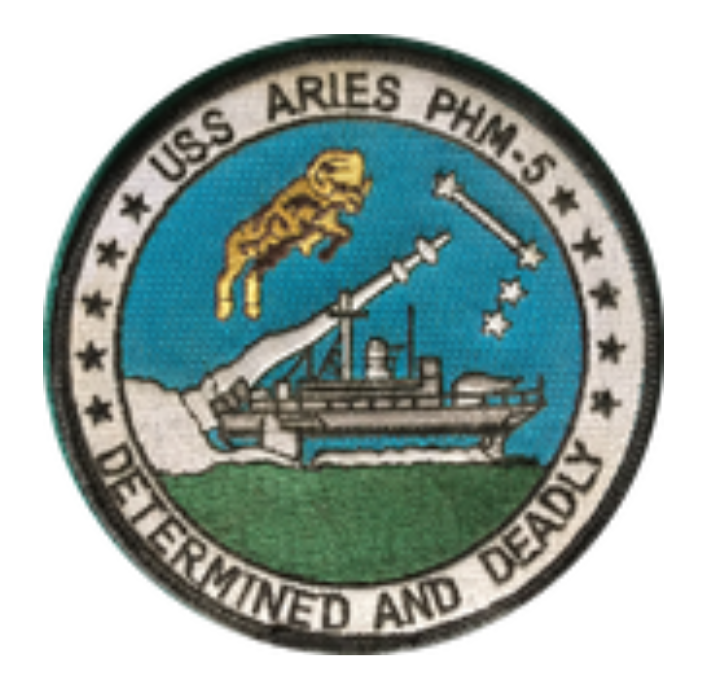
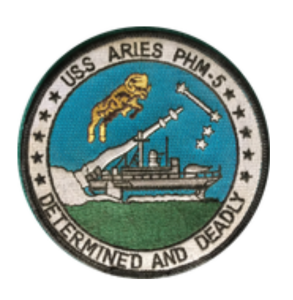
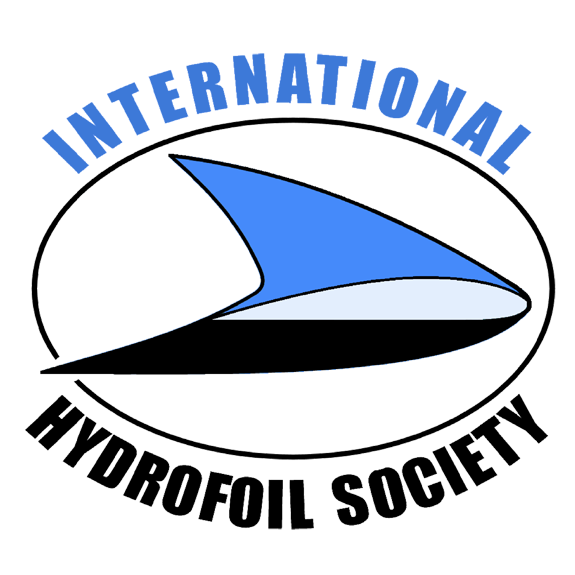
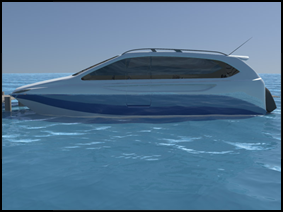
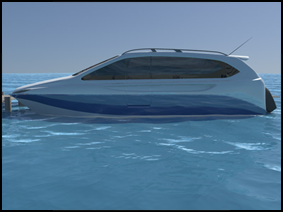

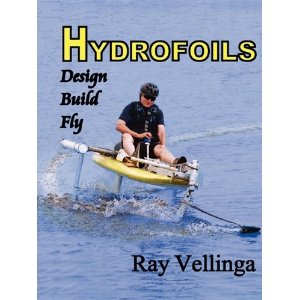
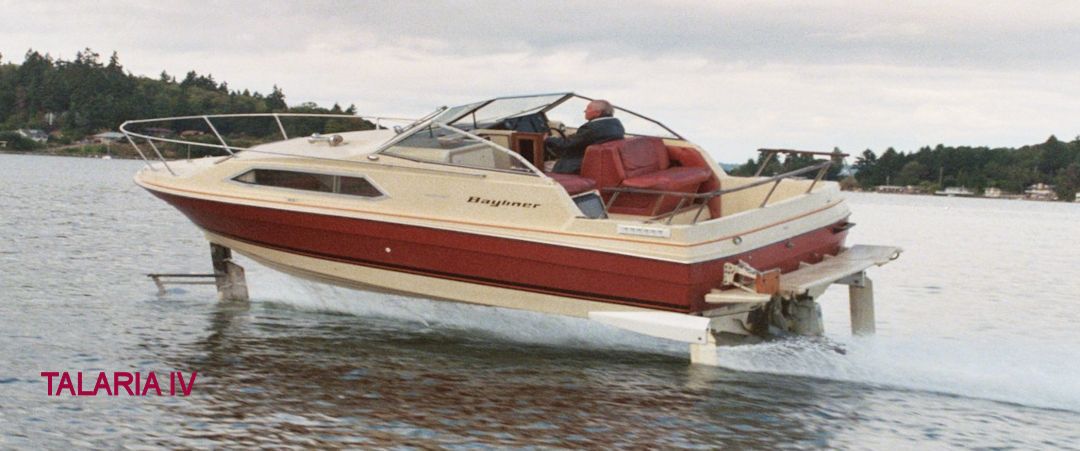
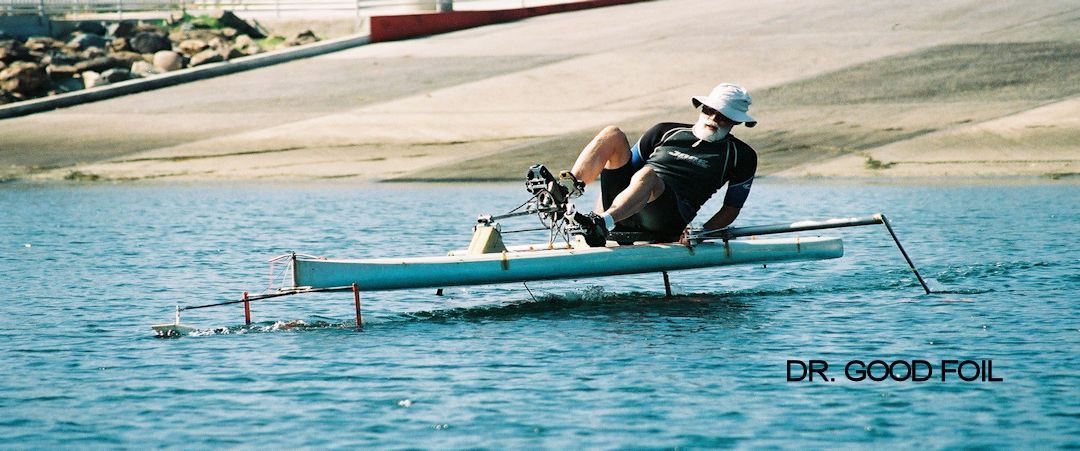
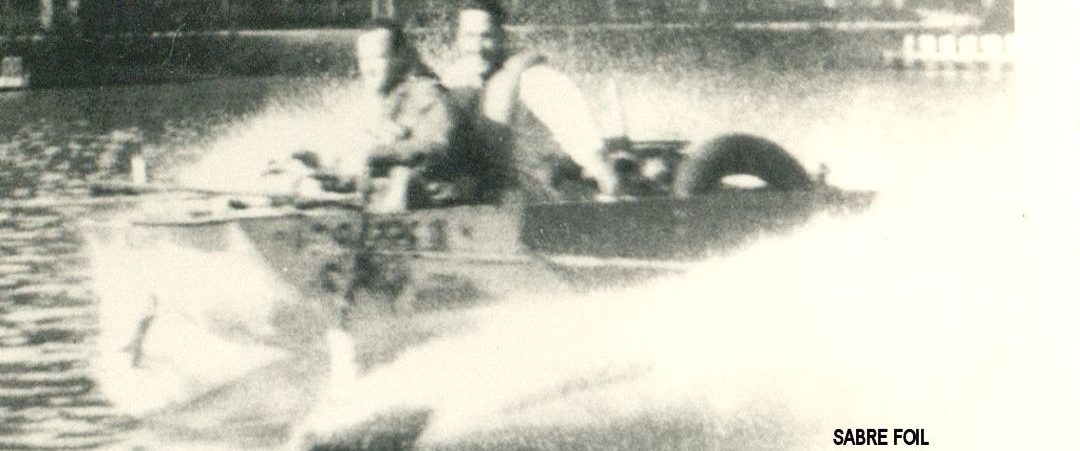
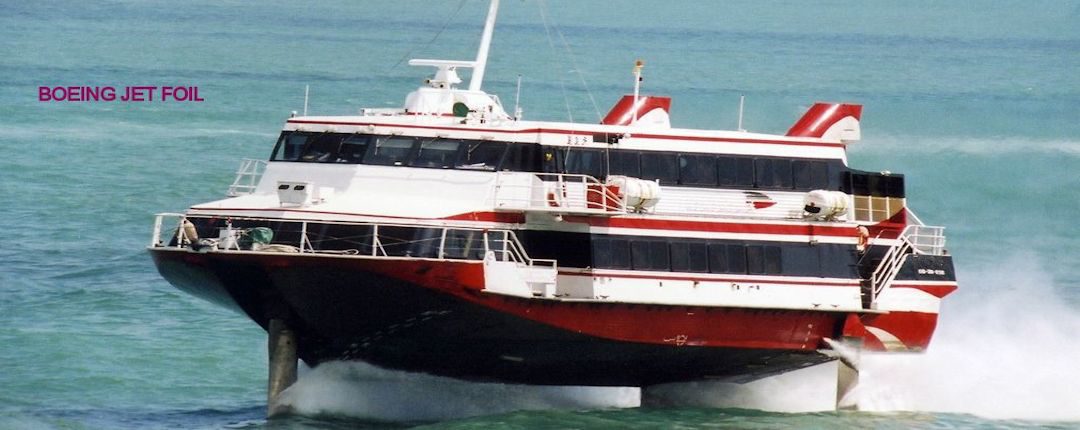
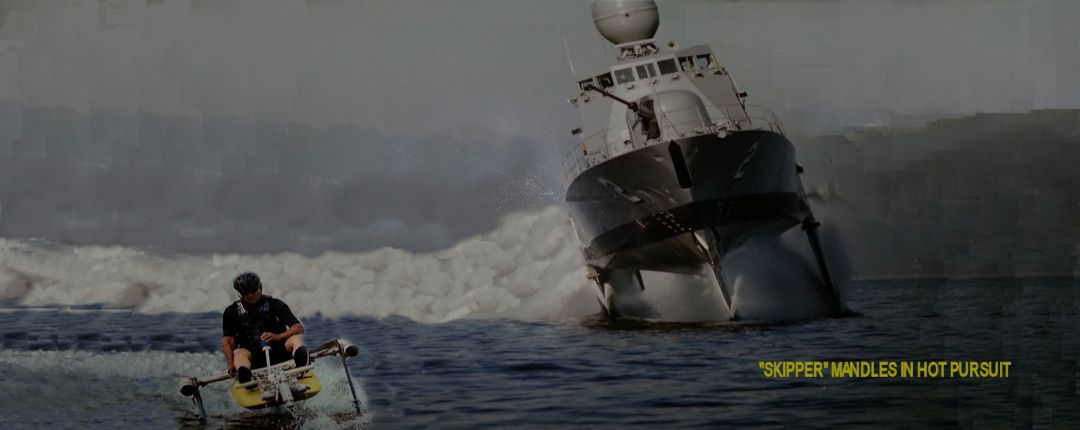
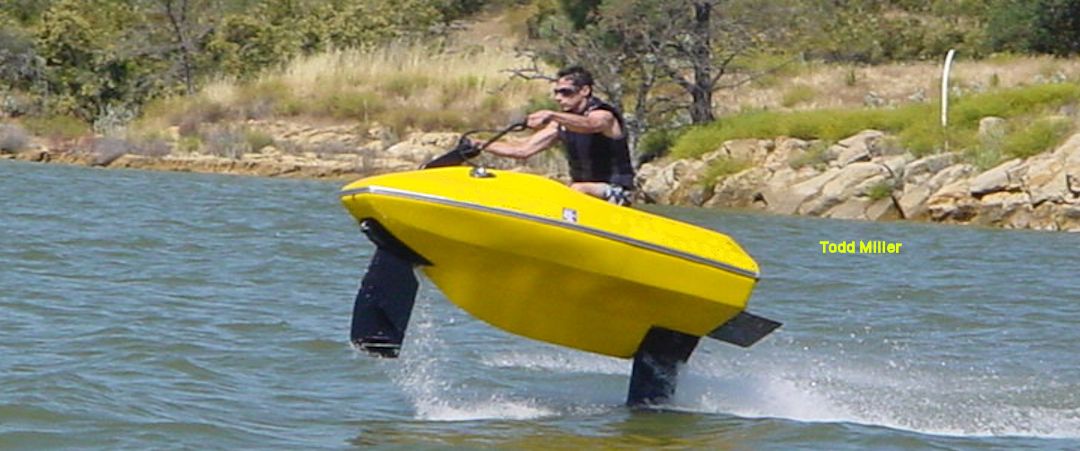
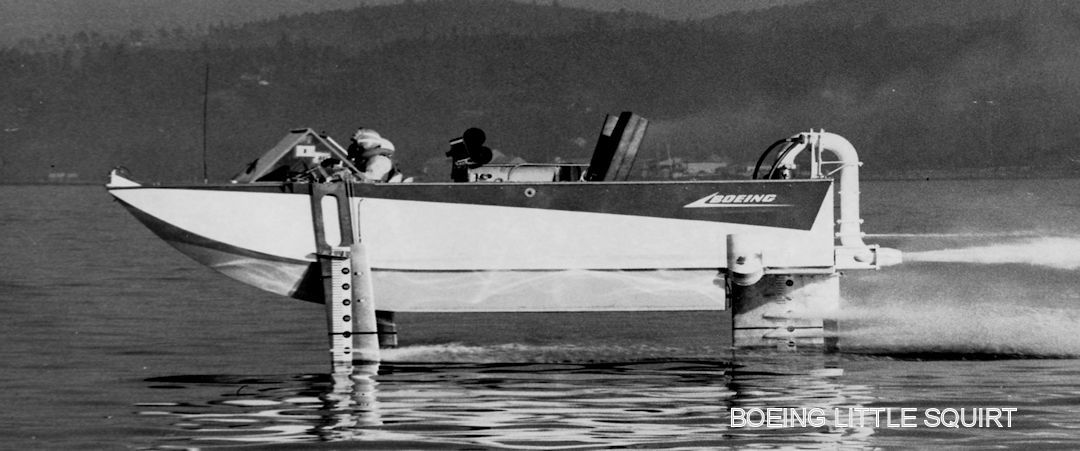
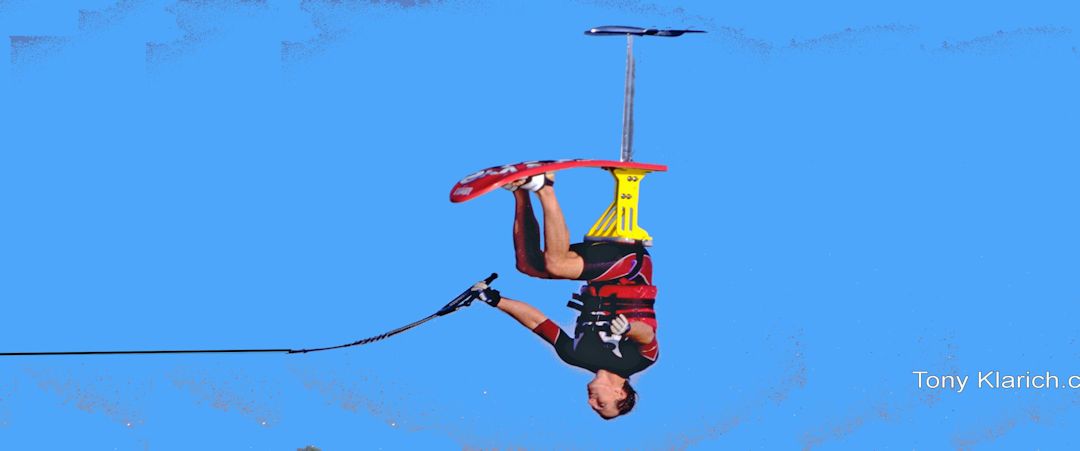

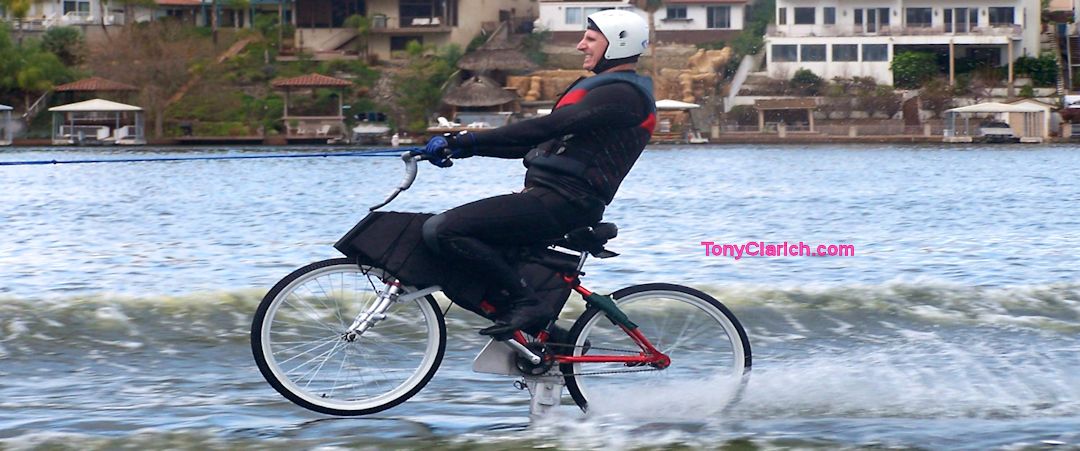





















 Two hydrofoils from Puerto Rico to Quebec in 1999
Two hydrofoils from Puerto Rico to Quebec in 1999 Four hydrofoils to Shanghai, China in 1998
Four hydrofoils to Shanghai, China in 1998 St.Petersburg, Russia to Shanghai, China in 1996
St.Petersburg, Russia to Shanghai, China in 1996
























